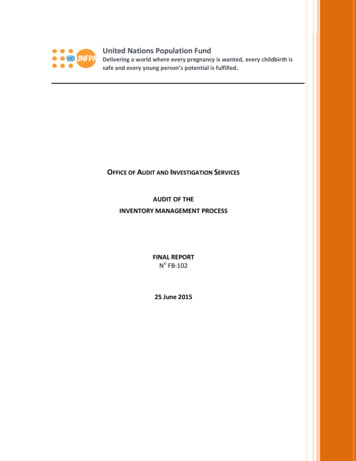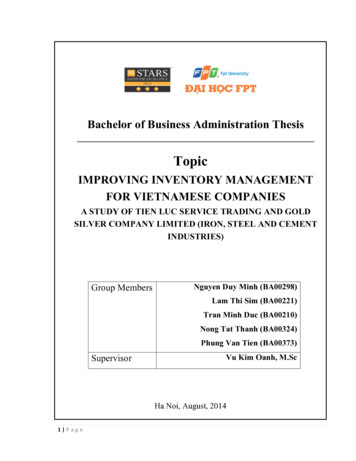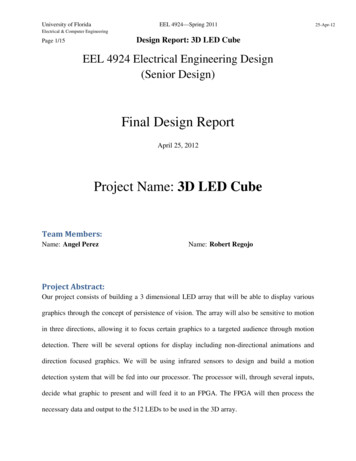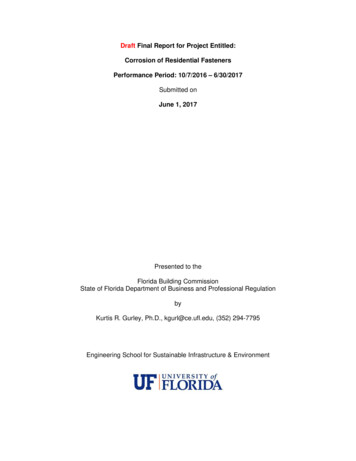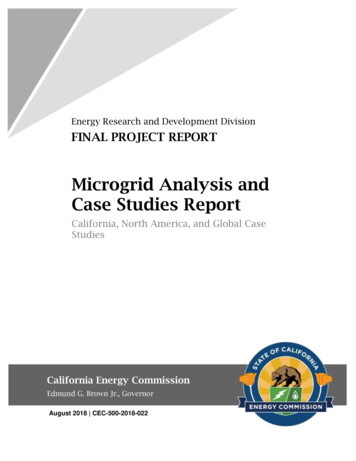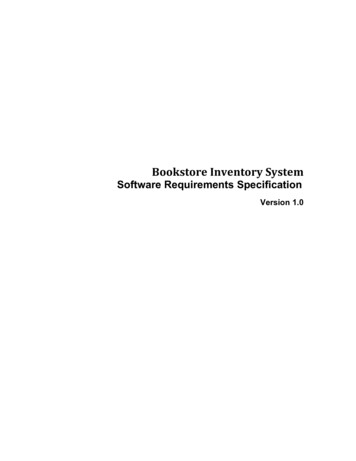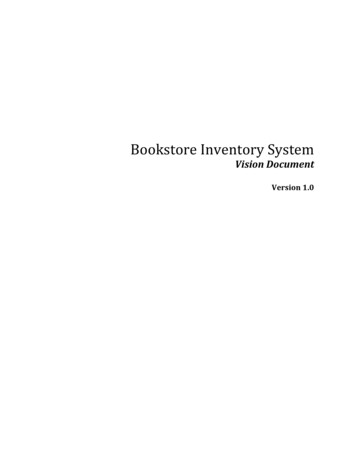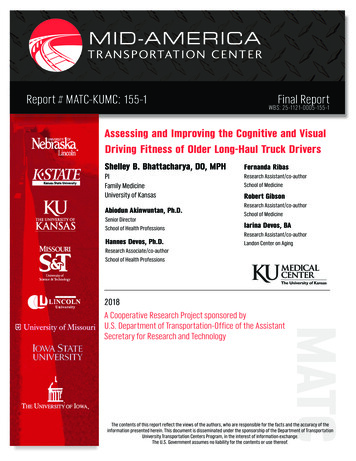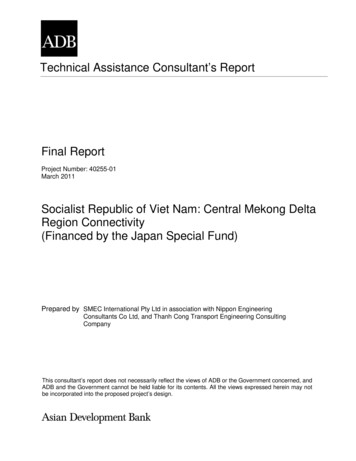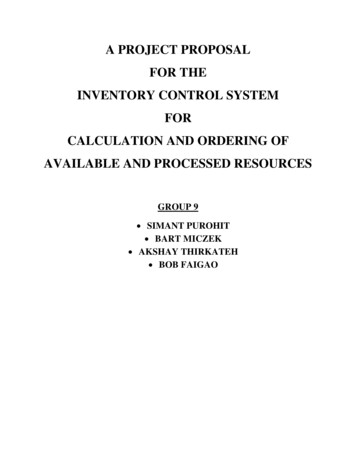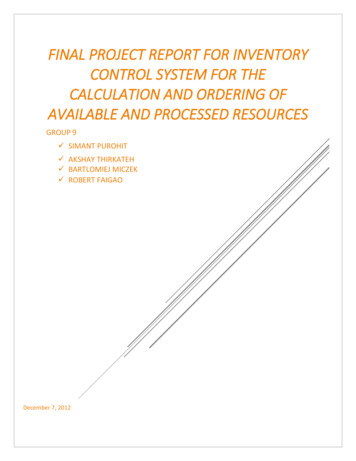
Transcription
FINAL PROJECT REPORT FOR INVENTORYCONTROL SYSTEM FOR THECALCULATION AND ORDERING OFAVAILABLE AND PROCESSED RESOURCESGROUP 9 SIMANT PUROHIT AKSHAY THIRKATEH BARTLOMIEJ MICZEK ROBERT FAIGAODecember 7, 2012
ACKNOWLEDGEMENTSWe would like to thank Ms. Kimberly Harmon for her professional input, feedback, and support, aswell explaining the need required to make our product a successful one. Her experience in therestaurant industry proved fruitful and extensive when it came to the project requirements anddevelopment. We all eat at restaurants, but no one realized that the amount of work that chefs dogoes beyond simply cooking the meal.We would also like to thank Professor John Bell and his teaching assistant, Munavvar Khan, fortheir continued guidance and feedback throughout the course of the project.1
TABLE OF CONTENTS1PROJECT OVERVIEW . 91.11.21.31.41.51.62THE PURPOSE OF THE PROJECT .9GOALS OF THE PROJECT .9THE DOMAIN . 9THE CLIENT .10USER OF THE PRODUCT .10OBJECTIVES AND SUCCESS CRITERIA OF THE PROJECT.11SYSTEM ARCHITECTURE OVERVIEW (DEVELOPMENT ENVIRONMENT) . 122.1FRONT END .122.2BACK END .122.3BASIC DATABASE RELATIONSHIP DIAGRAM.13.132.4ASSIGNMENT OF RESPONSIBILITIES .133REQUIREMENTS ANALYSIS . 143.1FUNCTIONAL REQUIREMENTS .143.2NON-FUNCTIONAL REQUIREMENTS .143.3USE CASE MODEL .173.4USE CASES .183.4.1 Update Resource Database.183.4.2 Check Threshold Use Case .193.4.3 Process Order Use Case .203.4.4 Add Recipe Use Case .213.4.5 Update Recipe Use Case .223.4.6 Remove Recipe Use Case .233.4.7 Add Occasion Use Case .243.4.8 Update Inventory Use Case .253.4.9 Correct Inventory Use Case .263.4.10Add Vendor Use Case.273.4.11Remove Vendor Use Case .283.4.12Add Ingredients Use Case .293.5MULTIPLICITY AND ASSOCIATION DIAGRAMS .303.5.1 Multiplicity Diagram .303.5.2 Association Diagram .303.6DYNAMIC MODEL .313.6.1 Update Resource Database Sequence Diagram .313.6.2 Add Recipe Sequence Diagram .323.6.3 Remove Recipe Sequence Diagram .323.6.4 Update Recipe Sequence Diagram .333.6.5 Add Vendor Sequence Diagram .343.6.6 Remove Vendor Sequence Diagram .343.6.7 Update Inventory Sequence Diagram .353.6.8 Correct Inventory Sequence Diagram .363.6.9 Add Occasion Sequence Diagram .362
4DETAILED SYSTEM DESIGN . 374.1DESIGN GOALS .374.2SUBSYSTEM DECOMPOSITION .394.3HARDWARE SOFTWARE MAPPING .424.4PERSISTENT DATA MANAGEMENT .434.4.1 Persistent Objects .434.4.2 Storage Strategy .434.5ACCESS CONTROL AND SECURITY.444.5.1 Access Matrix .444.6GLOBAL SOFTWARE CONTROL .454.9OBJECT DESIGN TRADEOFFS .484.10INTERFACE DOCUMENTATION GUIDELINES .494.11.1IngredientPackage:.514.11.2MiscPackage: .514.11.3RecipePackage: .524.12CLASS INTERFACES.534.12.1Class Ingredient .544.12.2Class AddIngredient .544.12.3Class Recipe .554.12.4Class Vendor .564.12.5Class Prediction.574.12.6Class AddRecipe .574.12.7Class RemoveRecipe .584.12.8Class UpdateRecipe .584.12.9Class Updates .594.12.10 Class Occasion .604.12.11 Class Orders .605TESTING . 615.1FEATURES TO BE TESTED/NOT TO BE TESTED .615.1.1 Features to be tested .615.1.2 Features not to be tested .625.2PASS/FAIL CRITERIA.635.3APPROACH.635.4SUSPENSION AND RESUMPTION.645.4.1 Suspension .645.4.2 Resumption .645.5TESTING MATERIALS (HARDWARE/SOFTWARE REQUIREMENTS) .655.5.1 Software requirements .655.6TEST CASES .665.6.1 Test case 1: Testing the Add Recipe Interface and its functioning .665.6.1.15.6.1.25.6.2Test case 2: Logging in to the system .705.6.2.15.6.2.25.6.3Test case specifications for Test case 1: Testing the Add Recipe Interface and its functioning . 66Preliminary test results for test case 1 . 69Test case specifications for Test case 2: Logging in to the system .
The Restaurant Inventory Control System is designed to not only assist in this problem, but also automate many of the tedious tasks associated with it. The system keeps track of current inventory levels for recipes at the ingredient level, predicts how much inventory is needed for the upcoming week, and generates order forms
